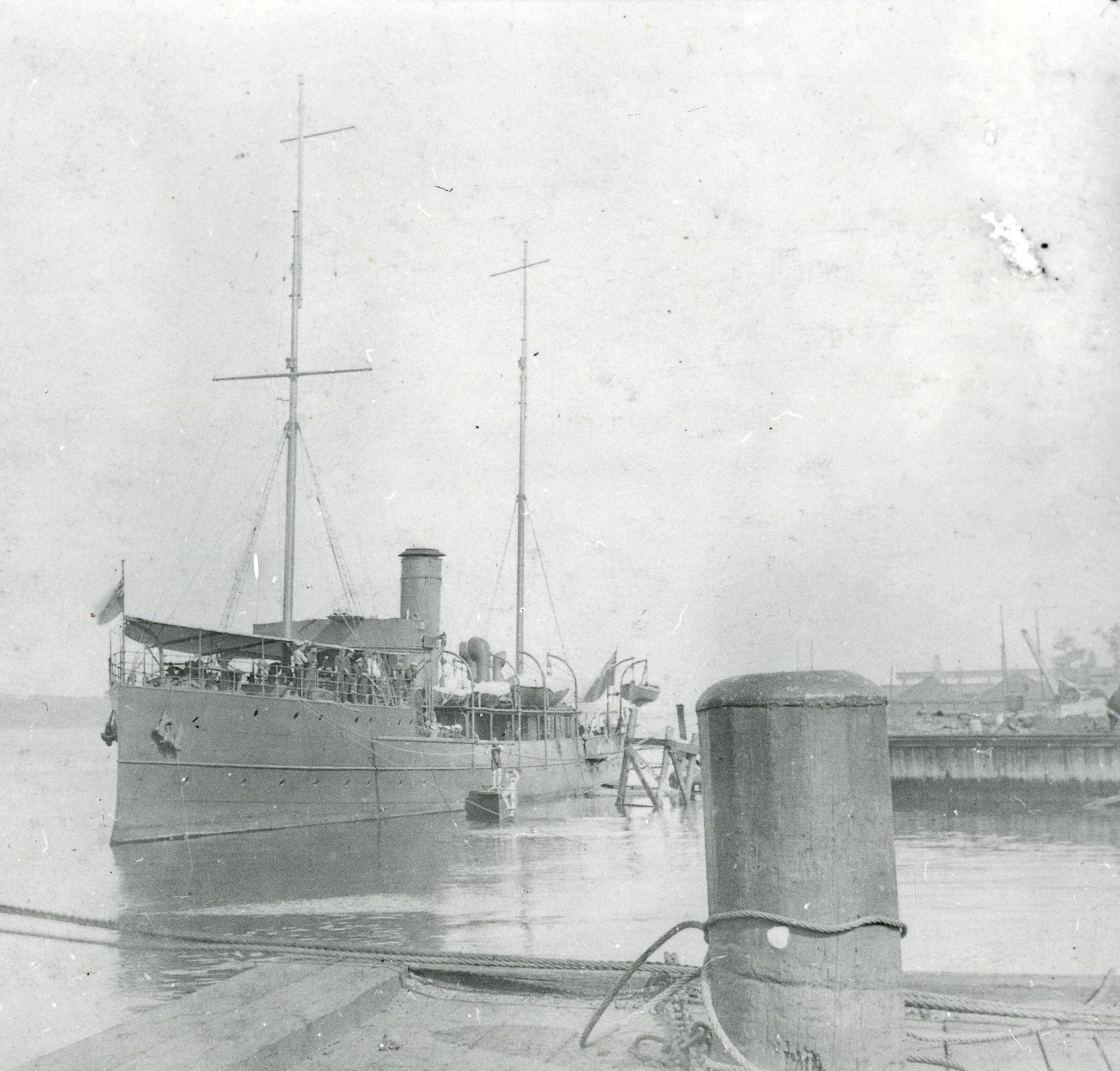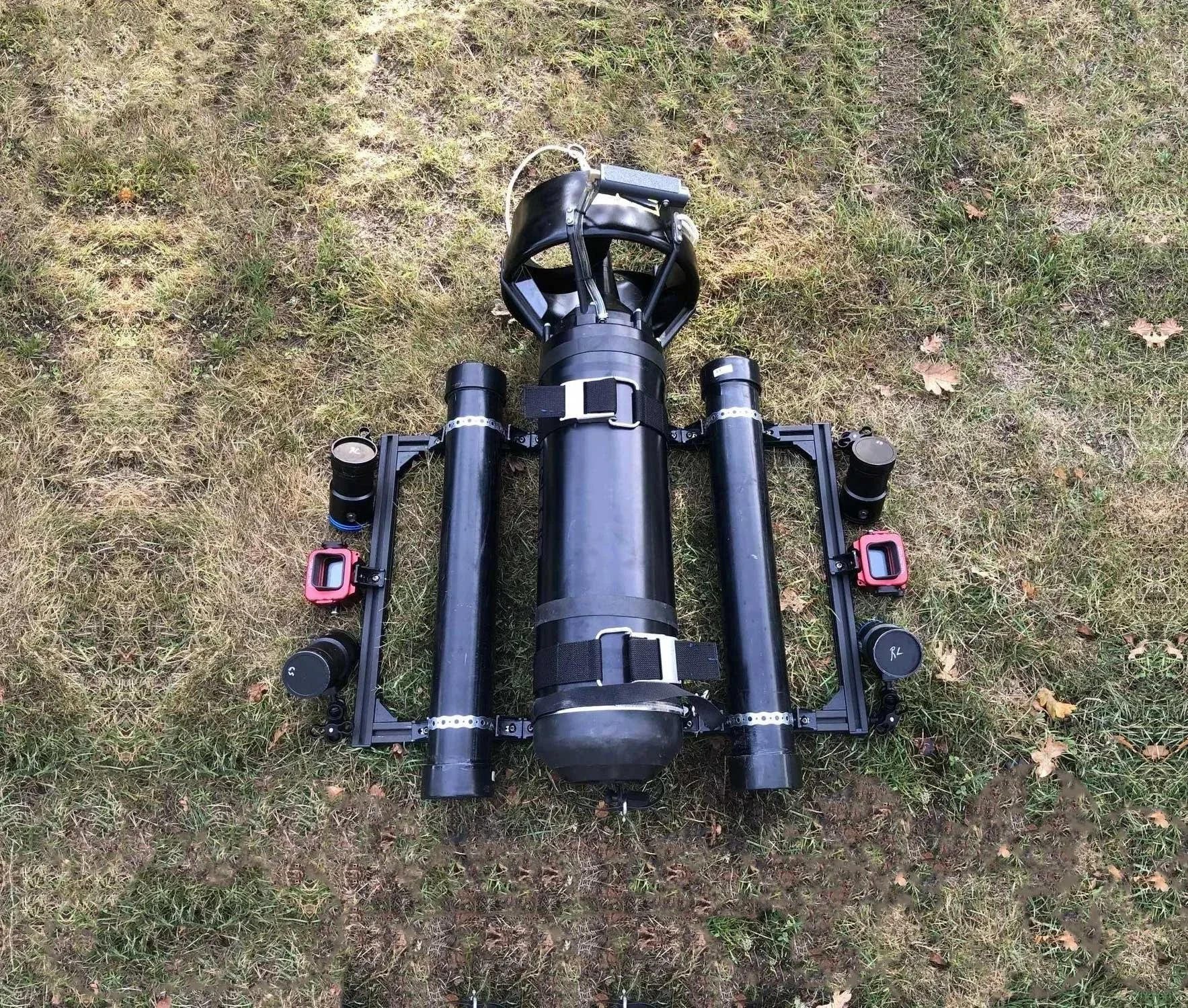
HMCS Canada
A Ship’s Story
Canada’s First Purpose-Built Warship
Launched in 1904, HMCS Canada was Canada’s first purpose-built warship. It began its journey as Canadian Government Ship (CGS) Canada assigned to fisheries patrol and naval training. Its design was inspired by Britain’s Royal Navy torpedo gunboats, featuring a distinctive ram bow that reflected the transitional naval architecture of the time. The ship was the only ocean-going version of its kind ever built, demonstrating advanced capabilities for its era.
In 1910, the Royal Canadian Navy (RCN) was officially founded, and CGS Canada played a crucial role in training sailors even before the navy’s formal establishment. To enhance its naval capabilities the ship’s fo'csle was raised in 1912 which improved her seakeeping qualities. In the following years, its armament was strengthened to four 3-pounder naval guns.
The ship was transferred to the RCN in 1915, becoming His Majesty’s Canadian Ship (HMCS) Canada marking a pivotal point in its career. By 1917, it had become the RCN’s second flagship replacing HMCS Niobe. During this period, it served as a training vessel and performed convoy escort duties, protecting merchant ships from the dangers posed by German submarines. Remarkably, HMCS Canada survived the catastrophic Halifax Explosion of 1917, the largest ever manmade non-nuclear explosion. By the end of the First World War, records show that Canada was armed with two 12-pounders forward and two 3-pounders aft. The RCN paid off HMCS Canada in November 1919 ending its pivotal role in Canada’s naval history.
After the war, Florida advertising mogul Barron Gift Collier acquired HMCS Canada in 1924 for a luxury cruise ship connecting Miami and the Bahamas. Under his ownership, the vessel was converted into a first-class passenger liner and initially renamed SS Canada, before later being rebranded as SS Queen of Nassau. Despite Collier's ambitions, the ship’s career as a luxury passenger liner was short-lived. In 1926 Mexican interests announced plans to buy the aging vessel to run between Tampico and New Orleans. While enroute to Tampa for refitting the Queen of Nassau sank during the evening hours of June 30, 1926.
HMCS Canada’s Discovery
Originally discovered by technical divers, the wreck of HMCS Canada was later scientifically documented and positively identified by Tane Casserley, a marine archaeologist with the National Oceanic and Atmospheric Administration (NOAA). As part of NOAA’s mandate to research and protect submerged cultural resources, Casserley conducted an extensive archaeological investigation of the site between 2001 and 2003. Utilizing advanced underwater survey techniques, site mapping, and historical analysis, his research helped establish the shipwreck’s identity and historical significance. Tane’s research has hypothesized that Canada’s starboard propeller shaft snapped, causing the propeller to fall off and opening a breach that allowed seawater to rush in and sink the ship.
Casserley’s findings were published in 2005 in his master’s thesis, CGS CANADA: A CANADIAN WARSHIP IN THE FLORIDA KEYS, at East Carolina University, contributing to NOAA’s broader mission of preserving maritime heritage.
HMCS Canada Expedition December 2025
HMCS Canada lies at a depth of approximately 70 meters (235 feet), placing it outside the range of recreational diving. This depth, combined with potential Gulf Stream currents, low visibility, and occasional fishing nets, has historically deterred divers from exploring the site. The Gulf Stream conditions may require advanced techniques such as drift decompression or alternate anchoring strategies. These challenges underscore why the site remains largely untouched, preserving its archaeological integrity. However, such conditions, while demanding, are well within the capabilities of our highly experienced Canadian technical dive team.
Our team comprises divers trained and experienced in conducting operations at depths of 90 meters (295 feet) and beyond. Utilizing closed circuit rebreathers (CCR) with gas mixes optimized for these depths, the team conducts dives in this range nearly every week to maintain peak skill levels. Diver propulsion vehicles (DPVs) will enhance efficiency and productivity on-site, reducing physical strain and maximizing exploration time.
By leveraging advanced technologies, rigorous training, and a methodical approach, our expedition is fully equipped to manage the challenges of the HMCS Canada site safely and effectively, enabling the collection of invaluable data while preserving the well-being of the team.
Florida Keys National Marine Sanctuary
Now resting within the Florida Keys National Marine Sanctuary, the wreck of the Queen of Nassau (HMCS Canada) serves as a vital cultural and historical touchstone, connecting the maritime heritage of Canada, the United States, the Bahamas, and Mexico. Protected under the Florida Keys National Marine Sanctuary and Protection Act (H.R. 5909, 1990), this international relic continues to inspire research, education, and preservation efforts, ensuring that future generations can explore the deep historical ties that link nations through the sea.
What is Technical Diving and Photogrammetry?
Technical diving is a form of scuba diving that enables exploration beyond the limits of traditional recreational diving limits. It requires specialized equipment, and advanced training. While recreational divers typically remain above 40 metres (130 feet) and use a single tank of air; technical divers descend deeper, stay longer to explore underwater caves or shipwrecks. They use specialized gas mixtures (such as nitrox with increase oxygen content and trimix that contains helium) and redundant equipment such as multiple tanks and closed-circuit rebreathers (CCRs).
Technical diving requires careful planning, and strict adherence to safety protocols. Divers must consider risks related to gas management, decompression procedures, emergency response, and operating in environments where direct ascent to the surface is not immediately possible. The margin for error is significantly narrower than in recreational diving, making teamwork and proficiency essential.
The wreck of HMCS Canada (later Queen of Nassau) rests upright at a depth of 70 metres (235 feet) well beyond recreational diving limits. Diving to this depth requires the use of CCR technology, trimix gas blends to reduce nitrogen narcosis and oxygen toxicity, and careful decompression planning for safe ascent.
Our team of highly experienced Canadian technical divers is specially trained to operate in this demanding environment and collect high-resolution imagery for 3D photogrammetry. The resulting 3D models will enable the non-invasive study of the wreck’s archaeological features and surrounding marine ecosystem.
Photogrammetry is a technique that uses a large number of overlapping photographs to extract precise measurements and generate detailed 3D models of objects or environments. While traditionally used in aerial surveying, architecture, and engineering, advances in high-resolution digital photography, powerful personal computers, and accessible software have made photogrammetry an invaluable tool in archaeology — particularly for documenting underwater sites.
In the context of marine archaeology, photogrammetry enables the non-invasive documentation of submerged cultural heritage, such as shipwrecks or ancient structures. By creating accurate digital replicas of these sites, archaeologists can analyze fine details, plan future work, monitor changes over time, and share findings with the public — all without physically disturbing fragile underwater environments.
Underwater photogrammetry is conducted using waterproof cameras and powerful lighting systems. Divers capture hundreds of overlapping images from multiple angles. These images are then processed using specialized software that identifies common points, matches contrast features, and uses lens geometry to reconstruct the object or site in 3D space. The result is a high-resolution 3D model of the shipwreck, coral reef, or archaeological structure.
These 3D models are particularly valuable because they allow archaeologists, students, and the public to explore and study underwater heritage sites virtually, without the time limits and physical challenges of scuba diving. Models can be rotated, zoomed, and viewed in detail on-screen; they can also be rendered as 3D-printed scale models or explored using immersive virtual reality headsets, making them powerful tools for education and outreach.
On the HMCS Canada Expedition, 3D photogrammetry will serve both archaeological and ecological purposes. In addition to documenting the wreck of HMCS Canada in unprecedented detail, the expedition will support NOAA’s ecological assessments — including invasive species monitoring, habitat mapping, and conservation planning — within the Florida Keys National Marine Sanctuary. This work contributes to the preservation of Canadian naval heritage, shared Canada–U.S. maritime history, and marine science and environmental stewardship.
Technology Developed For The Expedition: Photogrammetry Dive Sled
The HMCS Canada wreck site depth and dimension require a means to perform photogrammetry scans over large areas and under strict time constraints. The team has developed a stable and maneuverable DPV (Diver Propulsion Vehicle)-mounted platform for holding underwater video lights and cameras, as these are not commercially available. Our first photogrammetry sled prototype was tested in August 2025. It consists of an extruded aluminum channels frame with two ABS piping floats to achieve neutral buoyancy and trim. Four powerful lights and two GoPro action cameras in underwater housings are attached on the perimeter. The sled is strapped to the DPV using scuba diving tank bands. And, importantly, it is air travel compatible as it disassembles like a Meccano set.
The sled performed above expectations during our test runs. It proved to be solid and required minimal manipulation to initiate the scan. The sled is manageable on the surface and at depth. The dual camera overlap and picture clarity increase the likelihood of the photogrammetry software reliably reconstructing 3D models. We successfully generated models from cruising speed scans (three times finning speed). Testing and refinement continue on progressively deeper and darker sites as well as in strong currents in preparation for the expedition.
The 3D model produced following the first test run is available to view on Sketchfab: https://skfb.ly/pAtxy







